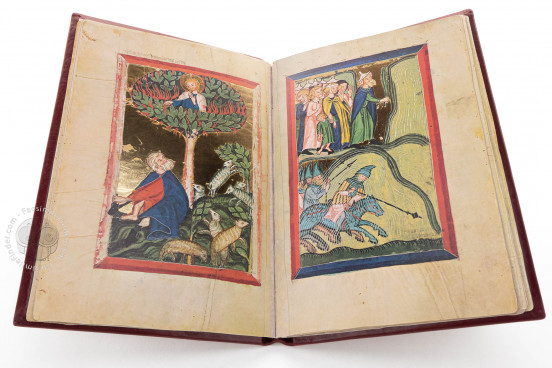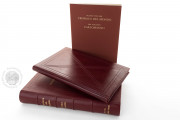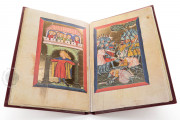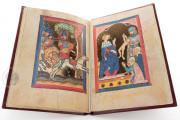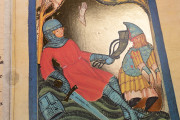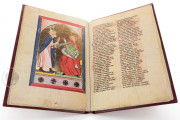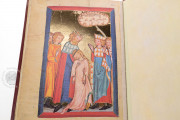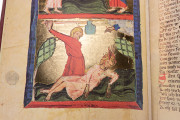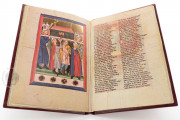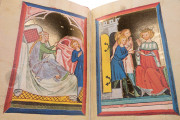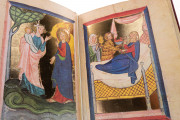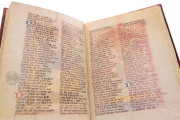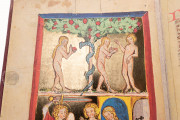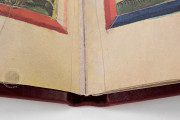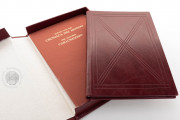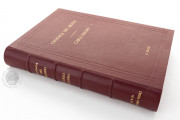The Berlin World Chronicle is a fragment of a manuscript of two works of Middle German poetry: the World Chronicle of Rudolf von Ems and Der Stricker's life of Charlemagne. It was written and illuminated in the Upper Rhine in the 1320s. Its twenty-three full-page miniatures feature animated figures before a polished gold background. They depict scenes from the Christian Old Testament extending from Creation to the reign of King Solomon and episodes from the legend of the Frankish military leader Roland.
World Chronicle of Rudolf von Ems
The World Chronicle of Rudolf von Ems represents a significant literary achievement commissioned specifically for King Konrad IV, son of the renowned Staufer monarch Frederick II.
This remarkable work was composed by Rudolf von Ems, a distinguished poet from Vorarlberg in Western Austria. The chronicle presents a comprehensive biblical narrative rendered in German verse, conceptualized not merely as religious text but as historical documentation with deliberate allusions to contemporary political circumstances.
Although the manuscript remained incomplete, its original scholarly intention was ambitious—to chronicle historical events from ancient times through to the contemporary period of its composition.
Stricker's Contribution to Medieval Epic Poetry
In contrast to the well-documented Rudolf von Ems, the itinerant poet known as Stricker remains somewhat enigmatic despite his substantial corpus of verse romances and comic narratives. Stricker's enduring literary reputation stems primarily from his masterful epic portrayal of Charlemagne, composed approximately around 1220.
Stricker's work draws upon an extensive tradition of literary accounts centered on Charlemagne that had flourished since the 12th century in the form of heroic epic narratives, particularly those associated with the legendary figure of Roland. The historical foundation of this epic is the military campaign against the Saracens in 778.
Artistic Excellence in Manuscript Illumination
The twenty-three extant illuminations preserved in the Berlin fragment demonstrate notable artistic affinities with the celebrated Codex Manesse and are attributed to a single accomplished artist. These illustrations exhibit exquisite lyrical qualities and are executed in vibrant pigments, with predominant chromatic emphasis on red and blue tones against luminous gold backgrounds.
Consistent with contemporary artistic conventions, male figures feature yellow hair, while females and celestial beings are depicted with flowing, undulating tresses of the same golden hue.
Preservation and Provenance
In 1826, this manuscript was acquired by August Heinrich Hoffmann von Fallersleben, the prominent composer of the Deutschlandslied (which later became Germany's national anthem), who was also a distinguished librarian and manuscript collector.
Subsequently, in 1850, Hoffmann von Fallersleben sold the manuscript to the Royal Library in Berlin. Currently, this precious medieval fragment is preserved among the treasured collections of the Staatsbibliothek zu Berlin.
We have 2 facsimiles of the manuscript "Berlin World Chronicle":
- Die Weltchronik - Karl Der Grosse facsimile edition published by Mueller & Schindler, 1980
- Cronaca del Mondo e Storia di Carlo Magno facsimile edition published by Il Bulino, edizioni d'arte, 2004

